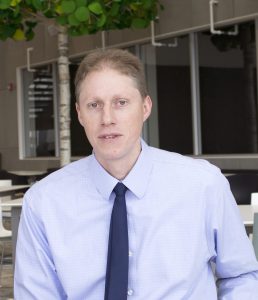We cannot simply test-drive our way to safety. Instead, innovative methods of demonstrating safety and reliability must come into play immediately.
A free three-hour professional training over two days in June aims to show how. Tuesday, June 16 and Wednesday, June 17.
Four years ago, researchers calculated just how long it would take to prove autonomous safety by test driving.
• A fleet of 100 vehicles would have to drive 24 hours a day, 365 days a year for 12 and a half years with no failures to show that autonomous vehicles are as good as human drivers.
• if a limited number accidents did occur during those 12.5 years, that same fleet of 100 would have to keep driving continuously for 400 years to show that they were roughly as good as human drivers. 400 years!
This is clearly an impossible proposition if the aim is to demonstrate safe autonomous performance prior to consumers riding in them on public roadways.
(From “Driving to safety: How many miles of driving would it take to demonstrate autonomous vehicle reliability?” By Nidhi Kalra and Susan M. Paddock. In Transportation Research Part A: Policy and Practice, 2016, vol. 94, issue C, 182-193.)
To ensure safety in the driverless future, test, test and test again. In coherent simulation, GNSS, inertial measurement and odometry combine and undergo fault-tree analysis of realistic dynamics and trajectory. This virtual workshop investigates safety, integrity, international autonomous safety standards, and testing for precise positioning in all environments and conditions.
Attendees will learn about validation and new safety standards: ISO 26262, SOTIF, ISO 61508, RTCM SC-134, 3GPP and EN16803, particularly relevant to GNSS and inertial in automotive.
Program, Day One
Tuesday, June 16, 1 PM Eastern
Block I: Introduction to High-Precision GNSS for Autonomous Vehicles
We’ll cover the increased GNSS performance needs for autonomous solutions (SAE Level 3 to 5), sensor fusion for precise positioning at the vehicle level, using a high-performance software positioning engine, an automotive-grade GNSS chipset, an IMU, and GNSS corrections. Integration into electronic control modules (ECMs) will be addressed.
Block II: Integrity for Precise Positioning in Automotive
This segment delves deep into high integrity positioning; definitions of integrity risk, continuity and availability; how integrity risk relates to automotive safety integrity levels (ASILs) and an overview of algorithms and error sources for high integrity GNSS/INS, providing an introduction to the testing segment coming up next.
Block III: Validating the Performance of Safety-Critical Autonomous Vehicle PNT Systems
Safety faults in autonomous vehicles have very low probabilities. It would take decades of road time to validate through driving alone. Therefore, we must test by creating the error conditions through simulation or fault injection.
Program, Day Two
Wednesday, June 17, 1 PM Eastern
Proof of Safety in Autonomous Vehicles
• Understanding testing requirements; hardware in the loop (HIL) testing, and how simulation equipment can be used to validate safety performance. Dynamic modeling to ensure a credible test solution.
• Applicable safety standards and what they mean: ISO 26262 (aka safety of execution), ISO/PAS 21448 ((Safety of the Intended Function, SOTIF, aka safety of performance); EN 16803, a new emerging European standard, focused on GNSS in Intelligent Transportation Systems.
• Testing PNT performance in jammed and spoofed environments, multipath and obscuration environments; the need for both record-and-playback and lab simulation testing, and how they complement each other.
• Defining the four ASIL categories, based on the level of hazard.
• Relevant test cases and simulation/verification activities applicable to GNSS/INS: boundary value analysis, environmental conditions and operational use cases, analysis of sensor design and known limitations, fault injection at input, HIL/SIL testing.
Expert Panelists

Lance de Groot, Senior Team Lead, Geomatics Software – Safety Critical Systems, NovAtel Inc, part of Hexagon’s Autonomy & Positioning Division
Lance holds a B.Sc. and M.Sc. in Geomatics Engineering from the University of Calgary. He joined Hexagon | NovAtel, part of Hexagon’s Autonomy and Positioning division, in 2008. During his tenure, he’s worked on many cutting-edge technology projects including developing algorithms for ground reference receivers used in SBAS networks, high precision positioning and relative alignment algorithms for commercial applications. His current focus is developing safety-critical software for autonomous applications. Lance is the Senior Team Lead, Geomatics Software with Hexagon | NovAtel’s Safety Critical Systems group in Calgary, Canada.
Gordon Heidinger, Senior Engineering Manager, Safety Critical Systems, NovAtel Inc, part of Hexagon’s Autonomy & Positioning Division

Gord holds a B.Sc. in Electrical Engineering from the University of Manitoba. He started his career in 1998 designing electrical systems with a leading Truck and Bus OEM in Canada. Gord thrived in engineering positions at a major Automotive OEM for approximately 5 years, specializing in design of electrical systems, vehicle electronics and vehicle-level automotive engineering. In 2008, he transitioned to program management at several electronics manufacturers in both Canada and the US, leading global programs that generated several billion dollars in revenue. Gord continues his passion in electrical engineering at NovAtel as the Senior Engineering Manager of Safety Critical Systems for Hexagon Autonomy & Positioning.

Ajay Vemuru, Product Line Manager – PNT, Spirent Communications
Ajay Vemuru has over 10 years of experience as navigation engineer and has worked on various aspects of GNSS receivers, from research and development to integration and testing. Ajay got his Master’s degree in Electrical Engineering and Computer Science from Ohio University
Ajay Vemuru is currently a Product Line Manager at Spirent Communications who helps the robotics community build safer and more reliable location-aware platforms. Before starting at Spirent, Ajay worked as a software engineer and research engineer at two of the leading semiconductor companies in silicon valley, California. After a successful career researching on advanced location algorithms and developing software towards improving location-based services on mobile devices, Ajay is now responsible for launching new solutions targeted towards automotive and robotics market.
Ali Soliman, Business Development Manager, GNSS, PNT Technologies, CAV Testing Systems, Spirent Communications

Ali received a BEng Honours degree in Electronics and Communications from Brunel University London and an MSc in Telecommunications with Business at University College London. He started his career at Spirent as a hardware engineer and since then has held multiple positions including solutions engineer and Product Manager. He is currently the Business Development Manager for the Americas, focusing on defining complex solutions and helping customers solve their test needs with Spirent’s current and future portfolio of products and services. He is an all-round technology enthusiast with a particular interest in PNT, CAV (connected and autonomous vehicles), and AI.






